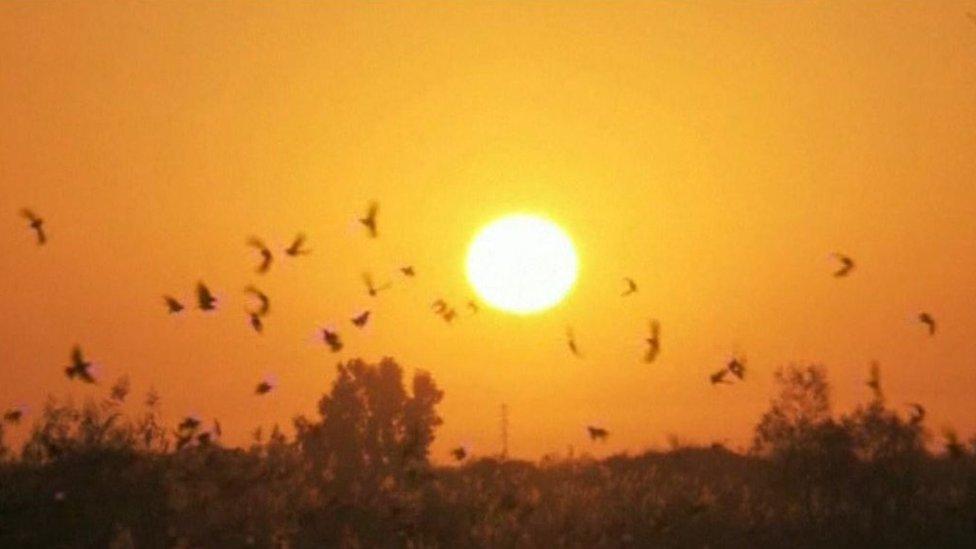Mysteries of murmuration revealed thanks to you
- Published
- comments

A murmuration can involve millions of starlings
A starling murmuration is an amazing sight.
At their largest you can get millions of birds wheeling about the sky just as the sun starts setting.
But it's a phenomenon we know surprisingly little about.
Last year I reported on work by the University of Gloucestershire and The Royal Society of Biology to change all that with a citizen science murmuration survey. Twelve months on it's time to report back and to launch phase two of this exciting research we can all help with.
Starling murmurations can occur anywhere and that's the problem scientists face if they want to study them. They end up going to sites where they know murmurations will occur, like Brighton pier.
The upshot is we have a few well studied sites, but we can't be sure if the starlings there are typical.
Murmuration season
Last year, Dr Anne Goodenough created a simple online survey anyone could fill in to record murmuration sightings.

Murmurations take place at dusk as the starlings look for places to roost safely
From about two well studied sites she now has data for more than 1600 starling flocks. It's a huge advance.
Perhaps the biggest surprise, external was just how many murmurations there are and how evenly spread they are across the UK in both urban areas and countryside. And also that some murmurations last an hour or more which is much longer than the scientists thought.
There's actually a murmuration season, late autumn through winter, as our local starlings are boosted by their European cousins coming here to escape the Scandinavian winter. So this is the time to launch phase two of the research.
There's a new survey here, external on the Royal Society of Biology website. It takes just 30 seconds to fill in and Anne would even like people to fill in the survey more than once if they see a murmuration in the same place on different days.
New questions
There are new questions too which are based on the responses last year. In particular, the researchers are interested in the behaviour of predators, like peregrine falcons, near these large flocks of starlings.
As well as the survey itself there's also a social media account here, external. So you can fill in the survey and also update the team with pictures and video.
This sort of research is called citizen science. Getting enthusiastic volunteers to help out and gather data on a scale that just wasn't possible before the internet, smartphones and social media. With even more people taking part this year we could reveal an extraordinary picture of this amazing wildlife phenomenon.